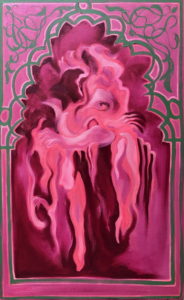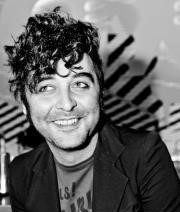The line between the public and the private lies in the difference between what you decide to make explicit and what you keep to yourself: most of the things that define us are those that we hide, those we choose to keep private. The artist’s unique sensitivity lies in exploring the human condition articulated plots in the spasmodic search for identity and in investigating their emotional intensity the suffering and problematic nature of events, living on their skin this inevitable predestination. The boundary between the public and private in the artists is disintegrated, and precisely this encroachment is the origin of the sense of attraction and identification that the most compelling works of art are capable of provoking. On the one hand, the observer is chained to the work by a voyeuristic drive that pushes him to delve into the intimacy of the emotions and thoughts of another individual; on the other, she finds in them a sort of mirroring of herself and the reality that surrounds her.
The Iranian Nazanin Moradi, recently included in the group exhibition “MK Calling 2020” organized by the MK Gallery in Milton Keynes (UK) after several exhibitions in France, Croatia, America, Iran, the United Arab Emirates and the United Kingdom where she currently resides, focuses her artistic production precisely on the contradiction between the inside and the outside, two polarities that mix in her works until they become inseparable. The coexistence of two opposites is a very contemporary language, based on the fact that contradiction can create something stronger and more incisive than two dissociated concepts. The artist manages to establish an essential and primary relationship with the apparently inaccessible entities of the collective unconscious, materializing a real irruption of the inner dimension (understood in both a psychological and biological sense) into reality. In her images, the fears, the repressed desires, the animalistic and instinctive impulses that anchor us to life are intertwined with muscles, bones, and flesh becoming substance and matter. It is the most intimate and hidden recesses of the human being that have a life and strength that often exceeds her will, to the point that we could ask ourselves if it is our bowels that belong to us or we that belong to them.
The work of Nazanin Moradi creates an “other space” in which these tensions are dramatized in the creation of fluid and obscure entities, jelly and uncontrolled demons mock us and turn into something else as soon as our gaze can decipher their forms. The symbolic, the imaginary, and the real are exchanged and intertwined in magmatic spaces, which could not be rationally allowed to exist, but in the hands of the artist acquire an incontrovertible presence. The creative process of Nazanin Moradi always starts with the ritual destruction and recomposition of a body, whose necessity is rooted in her belief that the origin of her being as an artist is a kind of trauma that allows her to be a recipient and spokesperson for a universal experience. In particular, her work combines costume, performance, painting, sculpture, engraving, and digital collage in an integrated way to rethink gender issues and the idea of sexuality in connection with the cultural history of her country of origin.
The first body to deconstruct and reshape is, therefore, her own, offered to the indeterminacy of the events during the performance dance with a sacred imprint in which the artist engages in front of the camera of her iPhone wearing costumes made by herself. Subsequently, the various frames of the video become independent photographic images in which the movement, deprived of consequentiality and duration, imposes itself on the integrity of the form as a sculptural force that deforms the image, bringing out the intrinsic metamorphic potential of the human body. These digital frames, in turn, become the source of inspiration for the subsequent oil paintings, continuing the stratification and remixing of the initial visual material to lead us to that disturbing unknown destination where desire and attraction, fear, pleasure, and complicity come together.
These solitary shows are the primary materials in her research, in which the empathetic energy of the artist awakens in the form of images all the demons that populate our collective unconscious and the disruptive force of the original deformity. The spectral bodies generated by the encounter of these two spheres suggest a bubbling mixture of ancestral and primary forces, closely linked to creation as an archetype prior to any cultural elaboration. The opposition between conflicting tensions is a key theme of the artist’s most recent creations, which by drawing and color, exacerbates the forced symbiosis between bodies forced to coexist in the same portion of amniotic space almost as if they were part of a single organism. What interests Nazanin Moradi most is the endless cycle of construction, transformation, and destruction staged by the vicissitudes of these bodies and their primitive struggle to exist in an atmosphere that we imagine as incandescent as an alchemical crucible.
The impossibility for each being to exist independently and permanently can also be read as a passionate figurative metaphor for the process of “translation” of the initial inspiration from one technique to another, highlighting the impossibility of reducing the idea to a unique appearance. The gap between any visible manifestation, like the apparent inconsistencies between the splitting of the various bodies and the residues of their individualities, identifies an unprecedented aesthetic of metamorphosis intended as a projection of the artist’s creative identity, in which flow the private space of her studio, the materials she uses, her body and expanded mental space that includes contemporary reality like the great mythologies of past civilizations.
Info:
 Nazanin Moradi, Untitled. Painting, oil color
Nazanin Moradi, Untitled. Painting, oil color
 Nazanin Moradi, Vicious Circle. Painting
Nazanin Moradi, Vicious Circle. Painting
 Nazanin Moradi, Turning and turning. Painting
Nazanin Moradi, Turning and turning. Painting
 Nazanin Moradi, Witch House. Painting, oil color
Nazanin Moradi, Witch House. Painting, oil color

Actor and performer, he loves visual arts in all their manifestations.






NO COMMENT